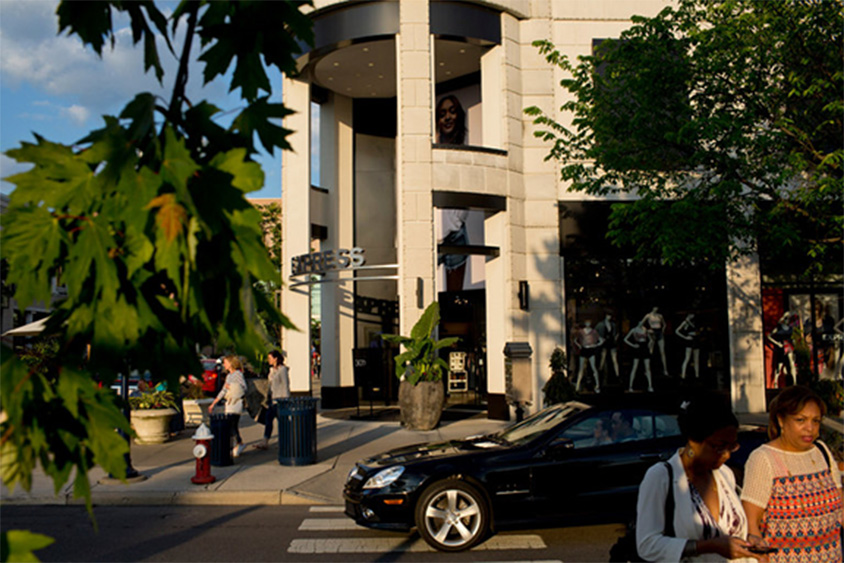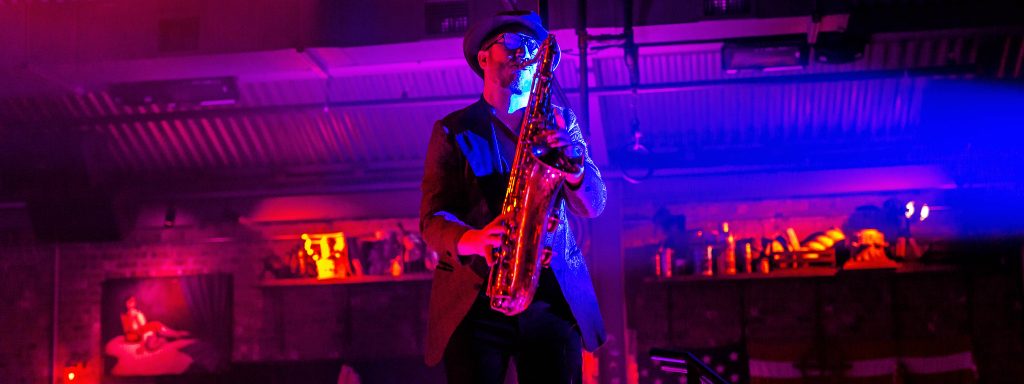New York Times, August 2 2016
By: Steiner + Associates
When suburban malls began to stagnate in the early 1990s, the parent company of the retail stalwarts Bath & Body Works and Victoria’s Secret took a chance on a different kind of shopping experience.
The company, L Brands, had bought 1,300 acres of meadows and forests on the west side of Interstate 270, just a mile from its Ohio headquarters, northeast of the state capital’s downtown.
Unsure about what to do with two square miles of undeveloped land along Interstate 270, Leslie H. Wexner, the company’s founder, turned for guidance to two developers: one based in New York, the other based in Miami and a native of Istanbul.
What the three came up with joined a Midwestern retailer’s view with a New Yorker’s experience of urban street life and a European’s devotion to food and sidewalk culture. Since construction began on Easton in 1993, the project has produced 3.7 million square feet of retail space in 280 stores and 4.2 million square feet of Class A office space in 21 buildings. There are also hundreds of hotel rooms and apartments.
The area became one of the first sizable multiuse developments to spring from a Midwest greenfield, inspired by the same principles of accessible public spaces, proximity and human scale that distinguish American towns built before 1900.
“Before automobiles, this is how America was built,” said Christopher B. Leinberger, a developer and the chairman of the Center for Real Estate and Urban Analysis at George Washington University. “It petered out after World War II, when we built the drivable suburban model. Only in the early 1990s did we realize there was an embryonic market for urbanism.”
[fusion_builder_container hundred_percent=”yes” overflow=”visible”][fusion_builder_row][fusion_builder_column type=”1_1″ background_position=”left top” background_color=”” border_size=”” border_color=”” border_style=”solid” spacing=”yes” background_image=”” background_repeat=”no-repeat” padding=”” margin_top=”0px” margin_bottom=”0px” class=”” id=”” animation_type=”” animation_speed=”0.3″ animation_direction=”left” hide_on_mobile=”no” center_content=”no” min_height=”none”]

Smith & Wollensky, a steakhouse that opened in the development in 2002. Photo credit: Andrew Spear for The New York Times
Today, with over 400 acres still available for development, Easton is a continuous construction site. The newest district is
Easton Square Place, a 100-acre cluster of office buildings where Alliance Data Systems and Abbott Laboratories have settled.
The Georgetown Company, the real estate firm based in New York that is Easton’s master developer and financial partner, just completed a three-story, 240,000-square foot office building for Alliance Data. Two more Alliance Data projects, an 86,000-square-foot building to be completed this year and a second 240,000-square-foot office complex, are scheduled to be finished in 2017. Construction of a 215,000-square-foot building for Abbott Laboratories is scheduled to be completed early next year. The total cost of the four buildings is $135.6 million.
Last August, the nearby 54-acre, 600,000-square-foot Easton Gateway opened. The $150 million shopping center, anchored by Whole Foods Market and Dick’s Sporting Goods, also includes restaurants. Over the next decade, about 2,000 residential units are expected to be built within the district.
Developers and architects say Easton has contributed to several influential turn-of-the-21st-century trends in land use and community design. It helped to reintroduce density as an attractive and profitable real estate design principle.
All of the clusters in Easton are tightly aligned outdoor districts. The dominant structure is the $50 million, 600,000-square-foot Station building, with a towering ceiling, space for dozens of stores and a cinema complex. It copies the scale and open-air design of a 19th-century train station shed and adjoins the 90-acre Town Center, the hub of the development, which features 240 retail stores and restaurants, a grid of sidewalks and narrow streets, fountains and a central square.
The Town Center breached the dominance in retail of indoor malls, with its emphasis on storefronts and pedestrians, instead of vehicles and parking. And such town centers nationwide are adapting Americans’ buying habits and entertainment patterns.
A number of town center developments with similar design principles were constructed in or near major cities in the early 1920s. The most durable, said Mr. Leinberger of George Washington University, is Country Club Plaza in Kansas City, Mo. Most of the initial mixed-use developments, though, succumbed to the advent of suburban indoor shopping malls, starting in the mid-1950s, which were built along major boulevards, and elevated climate control, retail uniformity and acres of parking to top shopping priorities.
“You could say that the period from 1950 to 1990 was an urban planning aberration,” said Yaromir Steiner, the chief executive of Steiner and Associates in Columbus, who moved to the area to help design and develop Easton Town Center. “We are finally correcting all of this.”
Mr. Steiner was the developer from Istanbul with whom Mr. Wexner worked on the Easton concept. He had developed CocoWalk, a popular open-air shopping and restaurant district in Coconut Grove, Fla. The other developer was Marshall Rose, chairman of the Georgetown Company.
The shift in urban planning turns out to have robust financial returns. To date, Easton’s districts have cost $1.7 billion to build, including $235 million in road, water, and other infrastructure expenses. According to the Georgetown Company, the development attracts 30 million visitors a year and generates over $1 billion annually in total retail sales. More than 32,000 people work at the various stores and offices. Over all, Easton returns $138 million annually in state, city, county and school tax revenue.
“This development generates $150 million annually just in food sales,” said Adam R. Flatto, Georgetown’s president and chief executive. “People respond to Easton as a social experience. They enjoy being here.”
Lee Peterson, an executive vice president at WD Partners, a national design consultancy based in Columbus, estimated that after the development of Easton, roughly 120 other mixed-use town centers have been built across the country.
Town centers, he said, are defying the trend of declining retail store sales nationwide. “Town centers fit the scale that people like,” Mr. Peterson said. “Bigger isn’t better. Better is better.”
One of the newest projects taking a cue from Easton Town Center is Liberty Center, north of Cincinnati. Constructed on 64 acres, where Interstate 75 and State Route 129 converge, the $300 million project opened late last year and encompasses 800,000 square feet of retail space, 75,000 square feet of office space and 240 residences.
Liberty Center was developed by Steiner and Associates and Bucksbaum Retail Properties. Steiner and Associates collaborated with Olshan Properties, formerly Mall Properties, to also develop the $300 million Bayshore Town Center in Glendale, Wis., north of Milwaukee. Bayshore opened in 1954 as a strip mall. In 1974 it was rebuilt as an indoor mall. Sold in 2004 for $40 million to Mall Properties, Bayshore Town Center opened in 2006 with a one-acre central square, 1.2 million square feet of retail space, 180,000 square feet of offices and more than 100 apartments.
Though the town center has proved to be profitable and durable, the idea of building such districts was just an experiment when Mr. Wexner, chairman and chief executive of L Brands, began thinking about it a generation ago.
Mr. Wexner was among the first retailers to note flagging interest among mall shoppers at his L Brands stores. In a speech in 1989 to a trade association, Mr. Wexner examined how American malls were boring to shoppers. He projected the approaching end of the mall era and called for a fresh approach.
“The novelty was gone,” Mr. Wexner said in an interview this spring. “Going to the mall ceased to be an event. Life occurs in cycles. I understood that there had to be something next.”
With 400 acres still undeveloped, Easton’s planners are focusing on more residences close to the development’s office and retail centers. The concept, said Mr. Flatto of the Georgetown Company, fits “the live-work-play evolution occurring throughout the country.”[/fusion_builder_column][/fusion_builder_row][/fusion_builder_container]







